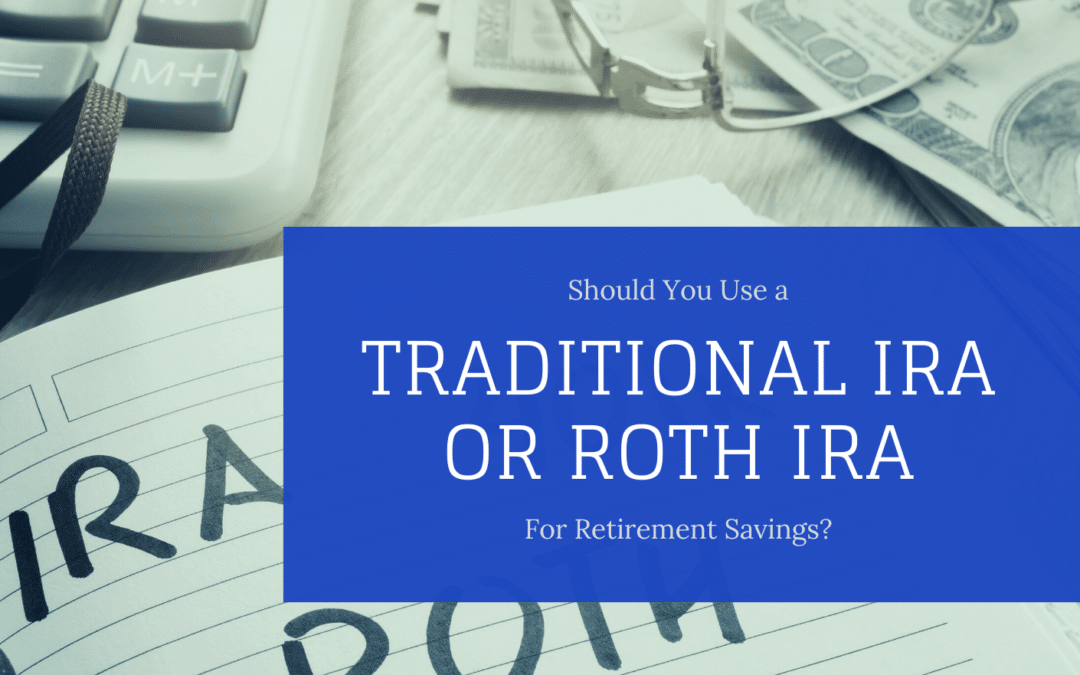Any time you can leverage the power of compounding in your favor, it deserves your full attention. When the opportunity to earn compound returns happens in a place where you get a tax benefit at the same time, it’s a no-brainer to take advantage.
Lowering or eliminating the drag of taxes on your investment returns means that you can compound your retirement and education savings goals at a higher rate. In turn, funding these goals becomes easier for you to accomplish.
The U.S. government created a variety of retirement accounts that workers can use to allow their earnings, income, and capital gains to compound tax-free over time. These are Individual Retirement Accounts, and they come in a variety of flavors.
Here’s what to know about each—and how to determine which of them might be right for you to use.
Individual Retirement Accounts (IRAs)
Anyone earning income can open and fund an Individual Retirement Account (IRA), also known as a Traditional IRA. As of 2020, you can contribute $6,000 per year (or $7,000 if you are over 50 years old).
Any earnings on your contributions grow tax-free in a Traditional IRA until you withdraw those funds at retirement. At that point, your withdrawals are subject to ordinary income tax rates.
Some people can also deduct IRA contributions from their taxable income, depending on their tax bracket. Higher income earners won’t get a tax deduction, but they can still enjoy the tax deferral on investment earnings within their IRA.
Unlike a deductible IRA, the original contributions to a nondeductible IRA are not taxed when they are withdrawn—only earnings on withdrawals are taxed as ordinary income.
Roth IRAs
Roth IRAs are a variation on Traditional IRAs. The Traditional IRA lets you deduct contributions from taxes today, enjoy tax-free growth, and then pay taxes on the growth when withdrawals are made in retirement.
The Roth IRA is the reverse: You contribute after-tax dollars, meaning that you don’t get a deduction on your contributions today. But in exchange, your money grows tax-free and you don’t pay taxes on withdrawals in retirement.
In other words, a Roth IRA requires you pay taxes today in exchange for the potential benefit of not paying taxes in the future.
Roth and Traditional IRAs: Income Limits for Tax Year 2020
|
Roth IRA |
||
|
Filing Status |
Contribution is limited if Modified Adjusted Gross Income is between: |
No contribution if Modified Adjusted Gross Income is over: |
|
Single/Head of Household |
$124,000 and $138,999 |
$139,000 |
|
Married filing jointly |
$196,000 and $205,999 |
$206,000 |
|
Married filing separately |
$0 and $9,999 |
$10,000 |
|
Deductible Traditional IRA for Individuals Covered by an Employer Plan* |
||
|
Filing Status |
Deduction is limited if MAGI is between: |
No deduction if MAGI over: |
|
Single/Head of Household |
$65,000 and $74,999 |
$75,000 |
|
Married filing jointly** |
$104,000 and $123,999 |
$124,000 |
|
Married filing separately |
$0 and $9,999 |
$10,000 |
* Individuals or married couples without an employer-sponsored plan such as a 401(k), 403(b), or 457 can make contributions to a deductible Traditional IRA, regardless of income.
** If only one spouse is covered by an employer plan, the deduction is limited if your Modified Adjusted Gross Income is $196,000 to $205,999, and the deduction is eliminated if your Modified Adjusted Gross Income exceeds $206,000.
Key Differences of Roth and Traditional IRAs
|
|
Roth IRA |
Traditional IRA |
|
Best Suited For |
An individual who expects to be in a higher tax bracket when he or she starts taking withdrawals |
An individual who expects to be in the same or lower tax bracket when he/she starts taking withdrawals |
|
Maximum Contribution (2019) |
$6,000 ($7,000 for age 50 and older) |
$6,000 ($7,000 for age 50 and older) |
|
Funded Using |
After-tax dollars |
Pre- or after-tax dollars |
|
Contributions Grow |
Tax-free |
Tax-deferred |
|
Withdrawals* |
Tax-free withdrawals after 5 years and age 59½ |
Penalty-free after age 59½ All earnings taxed as ordinary income |
|
Mandatory Distributions |
None |
After age 72 |
* The SECURE Act introduced a variety of exceptions to early IRA withdrawal penalties.
Determining the Best Account For You
The best type of IRA for you depends on whether your tax bracket is likely to be higher or lower in retirement than it is today. As a rule of thumb, if you’re in a low tax bracket now or retirement is multiple decades away, then you’re likely to come out ahead by putting your money into a Roth.
In general, you should contribute as much as possible to a Roth IRA.
While there are income limits on Roth IRAs, there are no such limits with traditional IRAs. And even if your income is too high to receive a deduction for your traditional IRA contribution, you can still enjoy tax deferred growth within that option. You may also use more sophisticated strategies like backdoor Roth conversions.
You may also contribute to both accounts at the same time, but the limit is still $6,000. In other words, you could contribute $3,000 to a traditional IRA and $3,000 to a Roth IRA—but at that point, you’d hit the limit and couldn’t add more to either account.
Trying to split your contributions between the two might become more relevant if your income only allows you to make a partial Roth IRA contribution.
As with any nuanced decision with a lot of variables to consider, working with a financial planner could help you get clarity on the best course of action for your specific situation.
Next Steps…
Lowering or eliminating the drag of taxes on your investment returns is just one way I can help you maximize how you use your money. There are dozens of strategies you can use at any point in your finance journey – before or after retirement.
If you would like to hear more about how I can help you, book a quick 15-minute call with me.
You may also enjoy the free worksheets and checklists I have that will help you make smart financial decisions like deciding if you should rent or buy a house, determine your net worth, or figure out how much cash flow you have every month.
Additional posts to read for more retirement tips include:
- How an HSA Can Boost Your Retirement Savings
- The Most Important Rule In Planning For Retirement
- The Most Potent Combination For Wealth Creation
…
RESOURCE: Do you want to make smart decisions with your money? Discover your biggest opportunities in just 9 questions with my Financial Wellness Assessment.















